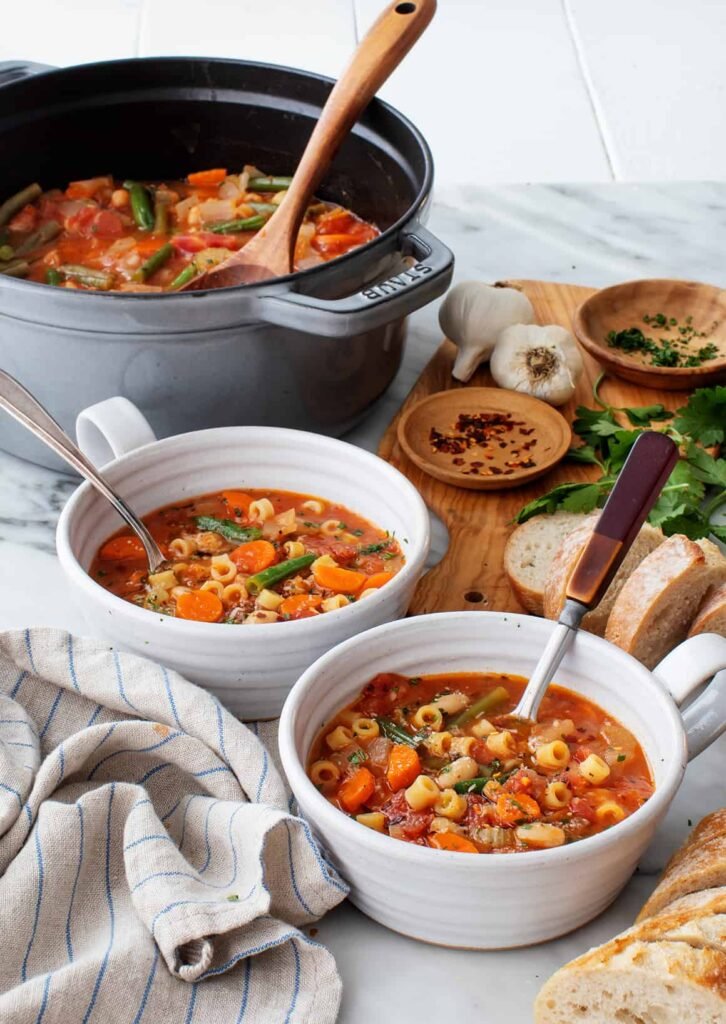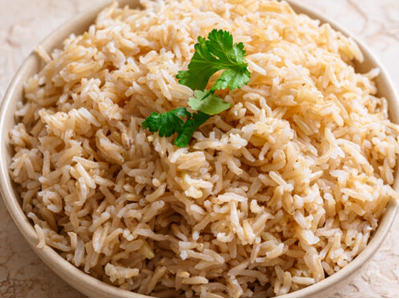Learning how to cook minestrone involves a scientific balance of ingredients, cooking time, and nutritional composition. Originating in Italy, minestrone is a vegetable-based soup that demonstrates the optimal interaction between plant-based fibers, starches, and aromatic compounds. This comprehensive guide will deconstruct every phase — from softening the base vegetables to achieving the ideal broth-to-solid ratio — and help you understand the culinary chemistry that defines the classic minestrone recipe.

Definition and Origins
Minestrone, derived from the Italian word minestra meaning “soup,” evolved as a rustic dish that utilizes seasonal vegetables, beans, and pasta. Historically, it was an adaptive recipe — variable based on available produce — but always followed a core principle: the transformation of raw vegetable matrices into a cohesive, flavorful system through controlled heat diffusion.
To master how to cook minestrone, it’s essential to understand that the soup’s base is not purely liquid; it’s a structured emulsion of starch, cellulose, and amino acids bound together in a tomato-enriched medium.
Ingredient Composition and Quantitative Ratios
A standardized ratio ensures balanced flavor and consistency across batches. Below is an optimized formula for six servings of authentic minestrone:
| Ingredient | Quantity | Function |
|---|---|---|
| Olive oil | 3 tbsp | Fat medium for flavor transfer |
| Garlic (minced) | 2 cloves | Aromatic base |
| Onion (chopped) | 1 large | Sweetness and umami depth |
| Carrot | 2 medium | Natural sugar and texture |
| Celery | 2 stalks | Aromatic structural base |
| Tomato sauce | 400 ml | Acidic binder and colorant |
| Red wine | 60 ml | Deglazing agent and acidifier |
| Vegetable stock | 1 liter | Base liquid medium |
| Zucchini | 1 cup, diced | Moisture and fiber source |
| Green beans | 1 cup, chopped | Chlorophyll and crunch |
| Spinach | 1 cup | Iron and folate enrichment |
| Beans (cannellini or kidney) | 1 cup | Protein and bulk |
| Fresh oregano & basil | 2 tbsp combined | Volatile aromatic compounds |
| Pasta (small shells) | 150g | Starch element |
| Parmesan cheese | 50g | Finishing agent |
| Salt & pepper | To taste | Seasoning equilibrium |

This formulation yields a dense, nutrient-rich product with balanced viscosity — neither watery nor excessively thick.
Read also our other recipe article:- How to Cook Gyoza Recipe – A Simple Guide to Making Perfect Japanese Dumplings
Procedural Framework for Preparation
Phase 1: Aromatic Base Activation
To initiate how to cook minestrone, begin with olive oil in a deep stockpot at medium heat. Add minced garlic to infuse the oil with sulfur-based aroma compounds. Once aromatic, introduce chopped onions, carrots, and celery — collectively referred to as the mirepoix, the classical flavor base for soups. This step converts vegetable sucrose into caramelized compounds that enhance broth sweetness and complexity.
Phase 2: Deglazing and Broth Formation
Once the mirepoix softens, deglaze the base using red wine. The alcohol facilitates the dissolution of browned bits at the bottom, enriching umami content. Immediately after, integrate tomato sauce and vegetable stock, diluting the mixture into a tomato-based broth. Allow the mixture to reach a gentle boil.
Phase 3: Vegetable Integration
Introduce zucchini, green beans, spinach, and canned or cooked beans. These ingredients contribute water-soluble nutrients and phytochemicals, converting the broth into a functional nutrient medium. The simultaneous cooking of multiple vegetables ensures complex flavor layering.
Phase 4: Pasta and Texture Calibration
For the pasta component, small types such as shells, ditalini, or macaroni are preferred. The starch from pasta acts as a natural thickening agent. You may cook the pasta separately and combine it later to control absorption and texture.
Phase 5: Seasoning and Thermal Equilibrium
Add oregano, basil, salt, and black pepper. Maintain a simmer for approximately 20–25 minutes, ensuring vegetable tenderness without over-disintegration. Optimal serving temperature: 70–75°C for best mouthfeel and aroma retention.

Nutritional and Biochemical Perspective
Minestrone is an exemplar of nutrient density. Each serving (~350 kcal) offers dietary fiber, plant-based protein, antioxidants, and complex carbohydrates. The high polyphenol content in olive oil and basil exhibits anti-inflammatory properties. When learning how to cook minestrone, one should focus on maintaining these nutrients by avoiding excessive heat or prolonged boiling.
Serving and Presentation Parameters
Serve minestrone in pre-warmed bowls. Top with grated Parmesan cheese for glutamate enhancement and a drizzle of extra virgin olive oil to heighten aromatic volatility. Fresh basil or parsley provides visual and olfactory balance.

